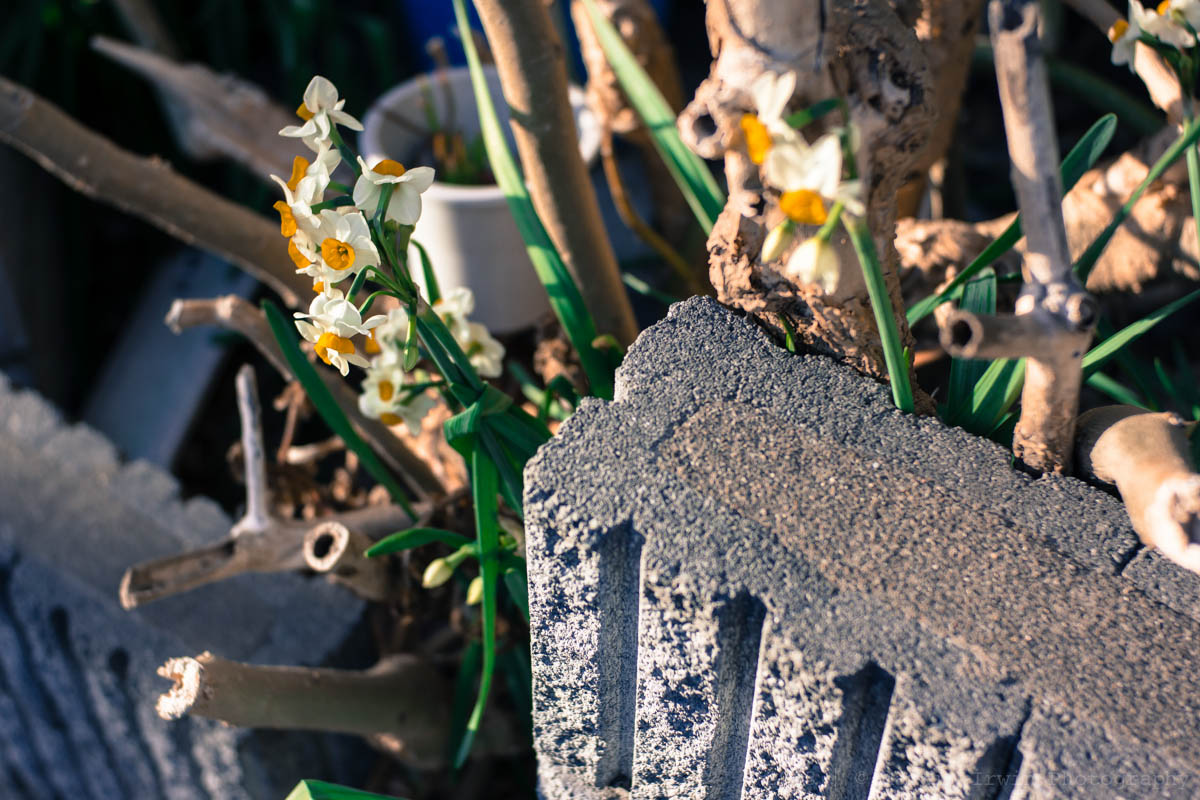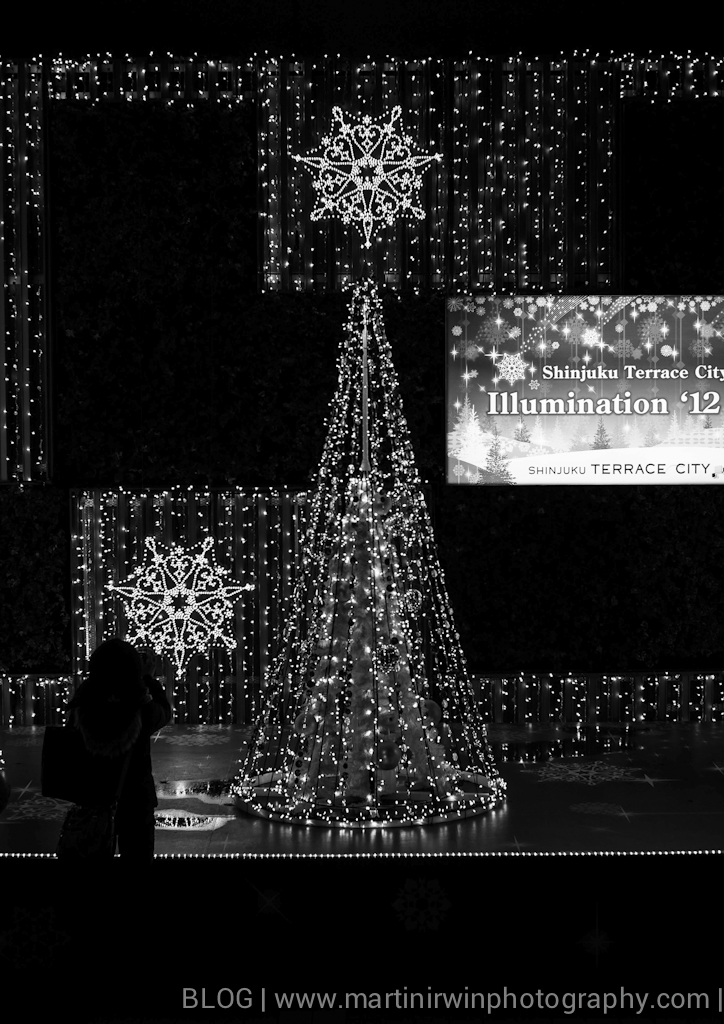WEEK 18
Read Moretree
Icho Namiki Dori
Icho Namiki Dori, or Ginkgo Tree Avenue, comes alive this time of year. The Gingko are living fossils, with no known relatives in existence. The tree, thought to originate in China, has a very distinctive leaf pattern.
The autumn colours of the Gingko are really intense - turning a very bright yellow like no other tree I've seen before.
The weather this weekend was fantastic - just bright blue skies.
I'll miss these amazing colours in a few weeks... but until then, they don't fail to put a smile on my face every single time.
A walk down the Tama River
I'm not sure why, but I always love to see paths, walls, and other man-made features "disrupted" by nature. The irony is that it is the man-made structures which are disrupting nature, not the other way around. I've noticed this kind of thing many times in Japan, but there's not always consistency. I don't know why this amazing tree (which looks more like a set of fingers emerging from the crust of the earth) was spared, but I am glad all the same.
These days, it's rare that I take more than the RX1 out on a walk. When you own a pocketable full-frame camera with a super-sharp, fast, versatile 35mm lens, it's hard to use anything else. It's very easy to get all swept up in the new shiny shiny, but my trusty year-old NEX-7 is still pleasing to use and has fantastic output. Don't get me wrong, new cameras and technology are a passion of mine -- but I'm not going to let the NEX-7 gather dust in the meantime. Anyway, I decided to bring a camera bag and use the NEX-7 for close ups and telephoto shots. Upon return to the house, after looking through the photos, Charlotte was praising the great colours of the RX1, when I pointed out that the photo was actually from the NEX-7...
These days I use my cameras in full manual mode. That is to say, I manually set aperture, shutter speed, focus, and ISO. I find the procedure of image capture very satisfying that way. However, operating in such a manner certainly highlights the relative simplicity of taking a photo of a tree, compared to the taking the above photo of a butterfly, a butterfly in flight, or a pond-skater.
These photos were all taken near the Tama River, which is for the most part, less than an hour by train from central Tokyo. I recommend a visit here if you'd like to escape the skyscrapers for at least a few hours.
Autumnal Aroma
What's that smell? Oh, it's kinmokusei, otherwise known as "Golden Sweet Osmanthus" (also called the sweet olive). This shrub is found all throughout Japan, and blossoms in Autumn, giving off a very sweet and pleasing aroma.
Charlotte was the first (between us) to notice this smell, and track down the source. At first I thought it was because she was lower to the ground than I, but the bushes grow to over 5m tall, so she simply has a keener sense of smell!
The smell really is sweet. Sweet as in sweets. The abundance throughout Japan has made this time of year probably the best smelling in all of Japan's seasons. We've decided that when we have a garden once again, to plant some of these close to a window.
The blue skies of Autumn and Winter are near-perfect
The Chinese character for kinmokusei are: golden 「金」; tree「木」and rhinoceros 「犀」... yeah, I wasn't expecting that either. Tree and rhinoceros together produce the word meaning osmanthus, 木犀, but I have no idea why - I'll try to find out the meaning, as I love the mystery behind the characters.
Unfortunately, the typhoon this week blew all of the golden flowers away. I'll miss these sweet olive trees, but probably not as much as Charlotte.
On growth
These trees are so heavily pruned each year, I'm routinely amazed by their relentlessness. This particular tree stands about 10m tall, and is considerably old. There are two such trees, either side of the University of Tokyo's Main Building, pictured below (photo taken almost 1 year ago with my NEX-C3 & SEL16F28). The tree above is pictured in the far left of this image:
Final Blossoms
Final Blossoms | NEX-7 & SEL24F18Z | 1/1250, f/2.2, ISO100, 24mm, RAW
The final blossoms are falling here in Tokyo, making way for the lush greens of the upcoming rainy season. There have been some collossal winds, and a bit of rain, so not many blossoms remain. The beginning of this week had some gorgeous sunlight, though. It was a little cloudy today, but the weather looks a little better this weekend, so I'll have my NEX batteries charged.
A hint of Spring
A hint of Spring │ NEX-7 & Voigtländer Nokton Classic 35mm F1.4 │ 35mm, ISO 100, f/2, 1/1000, RAW
Even though it's very cold each evening, daytime temperatures are hitting 10°C at the moment, in the bright sun. The first blossoms from various trees, mainly the plum-trees, are coming out and bringing colour to the concrete streets.
An encouraging site. A reminder that the bleakness of winter is short-lived.
Christmas in Japan
Christmas in Japan │ NEX-7 & Voigtlander Nokton Classic 35mm F1.4 │ 35mm, ISO 100, f/1.4, 1/40 Christmas is less than a week away! We moved here in January 2011, and so we've been here in Tokyo for almost two years. We originally planned to stay here for a year, but we've enjoyed it so much, that we are still here...
Christmas in Japan is an interesting affair, for a number of reasons. Firstly, I simply did not expect anything at all here. We're on an island the other side of the world, and after pretty far from America. I knew that New Year was the big celebration in Japan, and that Christmas Day itself is a day just like any other - most people will be at work. What I hadn't considered, was that the huge consumerist country that is Japan, has more Christmas illuminations, gifts and general themed events that I have seen during my entire life in the UK.
DSC01857
I've managed to negotiate a day off on Christmas Day (sounds rather Dickensian, to a Brit), but the rest of Japan will continue as normal. This means we will actually be able to go into shops, restaurants, cinema... but the first part of the day will be spent opening presents, which have been lovingly and painstakingly sent from the UK!
It's beginning to feel a lot like Christmas :)
DSC01846
Merry Christmas to all!
Japanese Maple
The Chinese character for tree, 木, basically looks like a tree. It's quite an easy one to learn. Turn it upside down, imagine it falling, and it resembles something akin to one of the leaves in the photo above. The leaves of the Japanese Maple are probably most beautiful at this time of year, when they give their final shout before they succumb to the falling temperatures.








